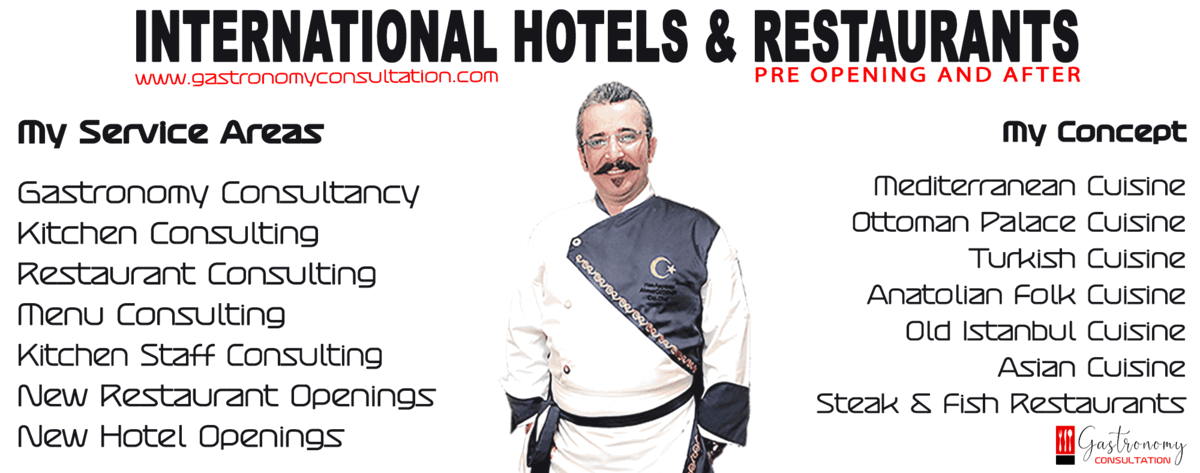Smart Menus: Use of AI to create smart menus that suggest dishes based on the customer's past preferences or dietary needs. Blockchain for Traceability: Consumers want to know where their food comes from, and blockchain could provide full transparency from farm to table. Zero-Waste Restaurants: Focus on sustainable practices to reduce food waste, water usage, and energy...
 What are the 2024 World Restaurant Trends?
What are the 2024 World Restaurant Trends?
Coord. Chef Ahmet ÖZDEMİR
What Does Trend Mean?
The term "trend" refers to a general direction or pattern of change observed over a specific period of time. Trends can manifest in various fields such as social behavior, economics, fashion, technology, and many others. Essentially, a trend indicates what is currently popular, gaining attention, or shifting in a particular direction.
Trends can be short-term, like a viral meme that only lasts for a week, or long-term, like the increasing focus on sustainable living that has been growing for years. They can be local, affecting only a small group of people, or global, (
New Gastronomy Trends) affecting large populations. Some trends may fade away as quickly as they appeared, while others can have a lasting impact and bring about significant changes.
Technology Adoption
Smart Menus:
Use of AI to create smart menus that suggest dishes based on the customer's past preferences or dietary needs.
Blockchain for Traceability:
Consumers want to know where their food comes from, and blockchain could provide full transparency from farm to table.
Sustainability and Ethical Values
Zero-Waste Restaurants:
Focus on sustainable practices to reduce food waste, water usage, and energy consumption.
Plant-Based Options:
With the rise of vegetarianism and veganism, expect more plant-based menu items, even in traditional meat-heavy restaurants.
Food Cultures and Diversity
Global Flavors, Local Ingredients:
Restaurants (2024
World Restaurant Trends) may offer international flavors but use locally sourced ingredients to create them.
Revival of Traditional Dishes:
 Health-Centric Options
Health-Centric Options
Nutritional Transparency:
Detailed nutritional information for each dish might be readily available for consumers who are increasingly health-conscious.
Functional Foods:
Ingredients known for specific health benefits like antioxidants,
World Food Trends, probiotics, or anti-inflammatory properties may feature prominently.
Experience and Atmosphere
Themed Restaurants:
Whether it's the 1920s speakeasy vibe or a futuristic setting, (
Tourism Trends) restaurants that offer an 'experience' could become more popular.
Interactive Dining:
Think cooking your own meals at the table or participating in the food preparation process in some way (
Hotel Kitchen Trends).
Service Models
Subscription Services:
Restaurants might offer subscription plans for regular customers, providing them with discounts, priority bookings, or exclusive menu items.
Multi-Functional Spaces:
Restaurants may not just be places to eat but could also serve as coworking spaces, art galleries, or even small-scale concert venues.
Takeout and Delivery Innovations
Ghost Kitchens:
These are kitchens designed solely for fulfilling online orders, (
New Kitchen Trends) allowing for a diverse menu and quicker service.
Eco-Friendly Packaging:
As delivery services continue to grow, sustainable packaging could become a significant focus.
Understanding trends is crucial for a variety of fields such as marketing, (
Guest Satisfaction in Restaurants) social research, data analytics, and even policy-making. Recognizing an emerging trend can offer valuable insights into future behaviors and preferences, allowing businesses, governments, and individuals to make informed decisions.
Coord. Chef Ahmet ÖZDEMİR
International And Intercontinental
Restaurant Consultant and Kitchen Consultant
World Ambassador of Ottoman and Turkish Cuisine
